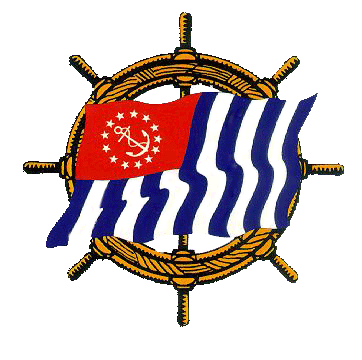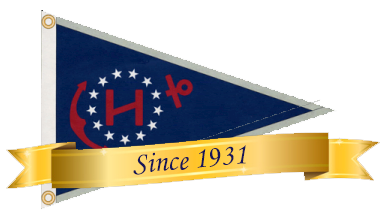Member Meetings and Events
The Hartford Power Squadron holds seven member meetings during the year. These meetings are primarily social with each having a program of general interest to boaters. Members get to talk with fellow boaters about their boating experiences and many life-long friendships have been kindled among our members.
The Annual Meeting in March is an important meeting for all members. It includes reports by the outgoing Bridge officers, the approval of the budget and the election of officers for the coming year. All members are encouraged to attend to help set the direction of the squadron for the new year.
The Change of Watch gives us a chance to celebrate the past year and install the new Bridge Officers. We give out awards to the outgoing Bridge and other members who have contributed their time and effort over the year. We always enjoy an excellent meal and a lot of fun.
The meetings are open to all members, guests, and prospective members and are generally scheduled at 6:30 on the 4th Tuesday of selected months. The meetings are held at the Olympia Diner in Newington.
Upcoming Members' Meetings
May 28, 2024
Members' Meeting
“Night Boat to New York”
by Erik Hesselberg
Night
Boat to New York: Steamboats on the
Connecticut, 1824-1931,

is a portrait of the vanished
steamboat days–when a procession of stately
sidewheelers plied between Hartford and New
York City, docking at Peck’s Slip on the
East River in the shadow of the Brooklyn
Bridge. At one time, Hartford could boast
two thousand steamboat arrivals and
departures in a year. Altogether, some
thirty-five large steamboats were in service
on the Connecticut River in these years,
largely on the Hartford to New York City
route. These Long Island Sound steamers,
unlike the tubby, wedding cake dowagers of
Western waters, were long, sleek craft, with
sharp prows cutting a neat wake as they
cruised along. Departing each afternoon from
State Street or Talcott Street wharf in
Hartford, the “night boats” reached New York
at daybreak, inaugurating a pattern of city
commuting that continues to this day.
Steamboating not only brought people and
goods—Colt’s firearms and Essex’s
pianos—down river to New York for export to
world markets, but also helped America’s
inland “Spa Culture” transplant itself to
the seashore, making steamboating not just
convenient transportation but also a social
phenomenon noted by such writers as Charles
Dickens and Mark Twain. No wonder crowds
wept in the fall of 1931, when the last
steamboats, made obsolete by the automobile,
churned away from the dock and headed
downriver—never to return.
About the
Author
Erik Hesselberg has been writing about the
Connecticut River for 20 years, first as an
environmental reporter for the Middletown
Press, and after as executive editor of
Shore Line Newspapers in Guilford, where he
oversaw 20 weekly newspapers from Old Lyme
to Stratford, CT. He was president of the
Middlesex County Historical Society and
developed the award-winning exhibit “A
Vanished Port,” on the Connecticut River’s
ties to the slave economy of the Caribbean
islands. His writings have appeared in
Wesleyan Magazine, the Hartford Courant,
Estuary Magazine, and on his blog,
Voicesontheriver.com. He lives in Haddam,
CT.
Meeting time and
place:
Date:
Tuesday, 28 May
2024
Time:
6:30 for dinner,
7:15 for presentation
Cost:
$20 for dinner with a cash bar at 6:30pm. Meeting
starts at 7:30pm
Place:
Olympia Diner, 3413 Berlin Turnpike, Newington,
CT
Reservations: Contact
Jim Salvatore
at
jimsal1@comcast.net.
What You May Have Missed
March 26, 2024 Members' Meeting
ANNUAL MEETING
"Show
Up and VOTE!"
Elections will be
held for the new Bridge and other Executive
Committee positions.
Elections start at
7:30 p.m.
PLUS!!!
“Hatchery
Season at the Fishers Island Oyster Farm”
with Jay Letendre
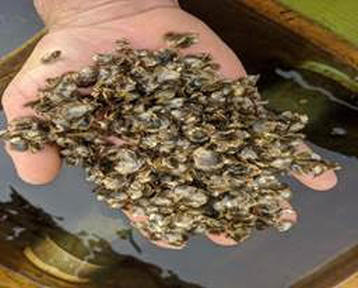 Jay Letendre has 15 years of experience in aquaculture
and marine biology. He currently is Hatchery
and Farm Manager at Fishers Island Oyster Farm.
While working for 8 years side by side with
Steve Malinowski, Jay and Steve raise oysters
from initial spawning to adult size as they
eventually are distributed to various farms
and consumers across the country.
Jay Letendre has 15 years of experience in aquaculture
and marine biology. He currently is Hatchery
and Farm Manager at Fishers Island Oyster Farm.
While working for 8 years side by side with
Steve Malinowski, Jay and Steve raise oysters
from initial spawning to adult size as they
eventually are distributed to various farms
and consumers across the country.
Jay’s favorite season is ‘hatchery season’, where he is always busy overseeing seed production, cultivating, and propagating algae. Jay works very hard to produce the healthiest, most attractive, and delicious oysters.
In his presentation, Jay will be going over the process of Oyster aquaculture and the multiple benefits farmed oysters have for us and the local ecology. He'll be bringing us through the life cycle of oysters from the larval tanks to your dinner plates and give some insight on the husbandry that makes this possible.
February 27,
2024 Members' Meeting
“Protecting Clean
Water, Restoring Healthy Rivers”
with Rhea Drozdenko
Please join us and our
presenter Rhea Drozdenko, River Steward in the
Connecticut River Conservancy, to learn what
is being done to clean up and protect our Connecticut
rivers.
This is sure to be a fun and
informative night out!
About our presenter:
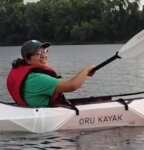
Rhea joined the CRC team in August 2022. Before
joining CRC, she worked as a community engagement
professional in higher education – getting
students more involved in the community and
creating programming for local K-12 students. Community
engagement has been an integral part of both
her personal and professional life – and
she tries to volunteer whenever she can.
Rhea holds a BA in Sociology with a Civic
Engagement Certificate, as well as a MALS in
Social Sciences from Wesleyan University. She
has lived in Connecticut for most of her life,
and she loves exploring the lovely gems this
state has to offer. She can often be found reading
a book in a hammock along the Connecticut River,
experimenting with different baking recipes,
or listening to live music.
January
23, 2024 Members' Meeting
"Trivia Night"
with Steve
Petty
CANCELLED
To be rescheduled for a future
meeting.
Back by popular demand!
You won't want to miss our January program featuring a trivia contest with categories of nautical and general knowledge questions.
This is a team event, so winning
does not depend on your knowledge alone, but
instead, the combined knowledge of your team.
Come join us for a fun night out!
February 28, 2023 Members' Meeting
Presentation
was Rescheduled to September 26, 2023
"Weather"
by
Darren Sweeney
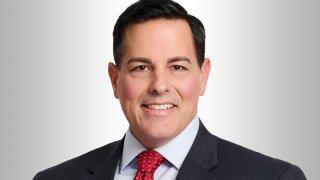
DARREN SWEENEY
Darren Sweeney of NBC 30 will be joining us for the 28 February Members' Meeting. Darren is a Meteorologist, and delivers the forecast every weekend morning. He has been recognized by the American Meteorological Society (AMS), and the National Weather Association (NWA).
Darren is also an Associate Professor of Journalism at CCSU. He volunteers his time at many events raising money and awareness for different types of cancer research. Darren helps homeless animals find good homes. He has experience forecasting severe weather and chasing hurricanes.
Help us welcome Darren Sweeney!
January 24, 2023 Members'
Meeting
"Trivia
Night with Steve Petty!"
You won't want to miss our January program featuring categories of nautical questions.
May 24,
2022 Members' Meeting
"Sailing - When
Everything Fails"
by Rob Goldstein
ROB GOLDSTEIN WILL KEEP YOU SPELLBOUND WITH HIS TALE OF A TRIP GONE WRONG.
ROB GOLDSTEIN
Rob started sailing when he was around 10 years old at a Boy Scout sailing camp where he learned all the basics of sailing, including knot tying, splicing and racing. After sailing for a number of years on his family's 16 foot sailboat, then Rhodes 19, his family purchased their O'Day 27 that he continues to sail out of Westbrook Pilots Point marina. Rob enjoys reading up on all things sailing and anything to expand his knowledge of boating, maintenance and safety.
A friend was moving from CT to Puerto Rico to live aboard his 33-foot sailboat. I volunteered to assist as the 2nd Skipper in the 1st leg of the trip to Norfolk, VA, an approximate 400-mile trip.
Almost everything went wrong that could have: The head check valve failed, nearly swamping the boat until we started the pump. Then the batteries went dead and we realized the alternator had not been working. We were sailing through major shipping channels with no lights, no AIS, and no pump. We ended up pumping by hand. The Captain fell overboard and was barely saved. The remainder of the crew were inexperienced and got sea-sick. Finally, we had to have sea-tow bring us to port as the engine wouldn’t start. To wrap it up, the Captain had a heart attack but is still planning to sail to Puerto Rico.
Rob will describe this ‘trip from hell’ with slides and videos of the voyage, and how he and the crew handled the emergencies. He wraps up with suggestions for any boater to try and avoid or at least prepare for emergencies at sea. Every boater should attend this important presentation.
March 22, 2022 Members' Meeting
ANNUAL MEETING
"Show
Up and VOTE!"
Elections will
be held for the new Bridge and other Executive
Committee positions.
Elections start
at 7:15pm
January 25, 2022 Members'
Meeting
Has Been Rescheduled
to February 22, 2022
"TRIVIA
NIGHT WITH STEVE PETTY!"
You won't want
to miss our January program featuring categories
of nautical questions.
October 26th Members' Meeting
“Submarine
Force of Today”
by Master Chief Kellen
Volland
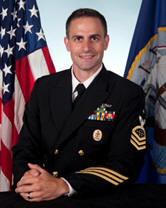
CMDCM (SS) Kellen Voland
Command Master Chief,
Navy Submarine Base New London
In February 2021, Command Master
Chief Voland became the 19th Command Master
Chief of Naval Submarine Base New London in
Groton, Conn.
Born in Quincy, Illinois,
Command Master Chief Voland ` also become a
Connecticut native. Following graduation from
Groton’s Robert E. Fitch Senior High School
in 2002, he enlisted in the Navy and volunteered
for the Submarine Force, ascending the ranks
and earning designation as a specialist in submarine
warfare.
He completed basic training
at Recruit Training Command Great Lakes, Illinois,
and Basic Enlisted Submarine School and Sonar
Technician “A” School at Naval Submarine
School, in Groton.
Command Master Chief
Voland’s at sea assignments include USS
HARTFORD (SSN-768) stationed in Groton, where
he served as a member, and then Leading Petty
Officer, of Sonar Division. During this assignment,
he advanced to First Class Petty Officer, earned
his Enlisted Submarine Warfare insignia, and
completed various deployments to the Southern,
Mediterranean and Central Command Areas of Operation.
H also served in USS MISSOURI (SSN-780)
stationed in Groton, as the Sonar Division Leading
Chief Petty Officer; and after advancing to
Senior Chief in June 2012, he assumed the duties
of Weapons Department Senior Enlisted Advisor.
USS MISSOURI completed a six month deployment
as well as a surge deployment to the European
Command (EUCOM) Area of Operations, while Command
Master Chief Voland was assigned. In August
2017, he reported to USS NORTH DAKOTA (SSN 784)
stationed in Groton, as the ship’s third
Chief of the Boat. he led USS NORTH DAKOTA through
two Six Month EUCOM deployments and achieved
Two Meritorious Unit Citations, and the 2018
COMSUBRON FOUR Battle “E” Award.
Command Master Chief Voland’s
shore assignments include duty as a recruiter
and Station Leading Chief Petty Officer for
Navy Recruiting District New England, and serving
as Sonar Assistant on the Staff of Submarine
Squadron Four in Groton.
Command Master
Chief Voland is a graduate of the U.S. Coast
Guard Senior Enlisted Academy Class 61 and the
Chief of the Boat/Command Master Chief course.
His personal decorations include the Navy and
Marine Corps Commendation Medal (five awards),
Navy and Marine Corps Achievement Medal (five
awards), Good Conduct Medal (five awards), and
numerous unit and campaign awards.
September
28th Members’ Meeting
“Join us
on an Adventure spanning nearly 18 Months on
America's Great Loop!”
Featuring Nick
Civitillo
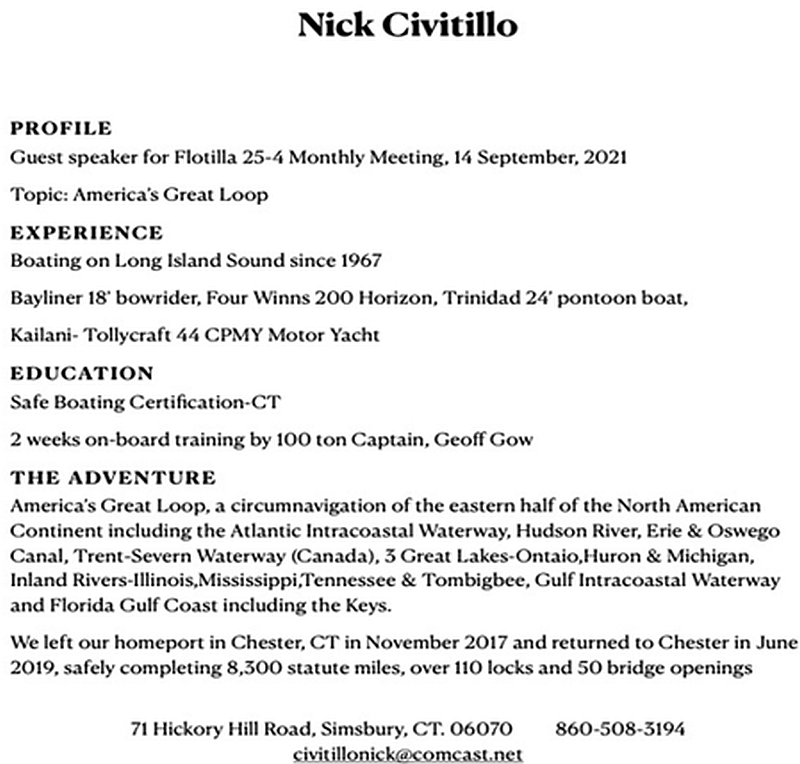
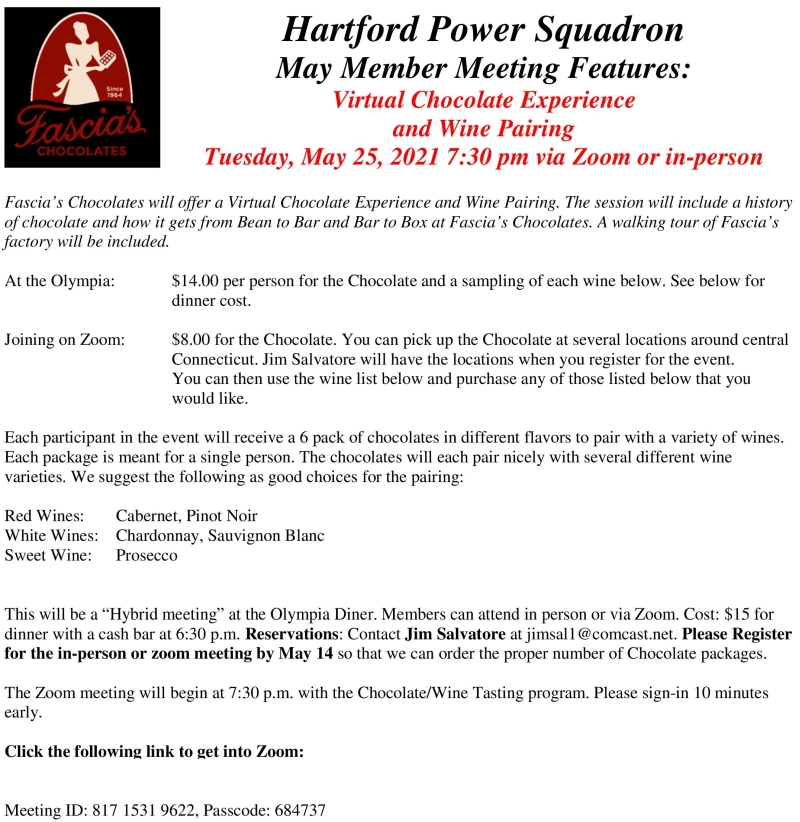
March 23rd Annual Members’ Meeting
“The
Water World of Varenna and Lake Como”
Lt/C Cliff McKibbin, SN
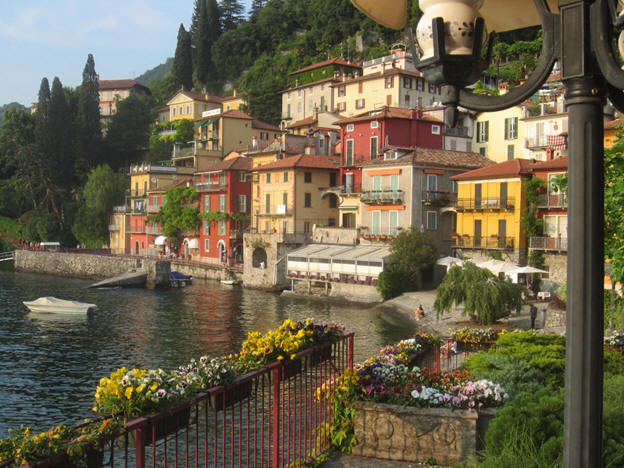
Rick Steves suggests
Varenna as the ‘place to stay’ when
visiting Lake Como in Italy. It is the center
of a triangle of the beautiful towns of Varenna,
Bellagio and Menaggio and is easy to get to
from Milan. A short ferry boat ride across the
lake to either town makes for an easy day trip
to see the towns, villas, churches, museums,
and waterfronts. Cliff will show slides of
all of the sights as well as discuss getting
there and highlight some of the sights in ‘not
to be missed’ Milan.
Cliff and his wife, Lucille, have enjoyed
visiting Europe and especially Italy for some
years. They have been using Airbnb for the last
five years and rely heavily on Rick Steves for
guidance on his ‘do it yourself’
style of travel.
September
22nd Members’ Meeting
“Whales
are Back in New York Waters”
by Lisa
Piastuch
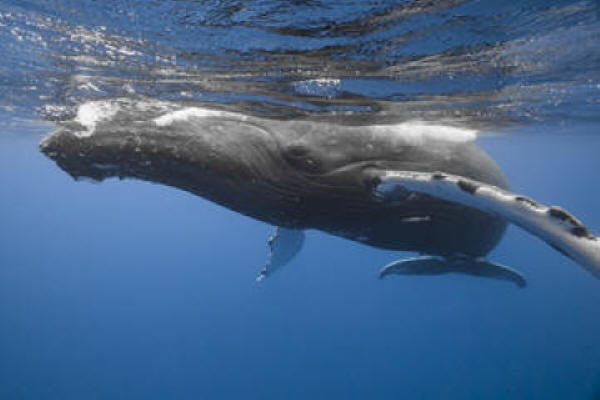

After many years of
absence, the whales are back in New York waters!
Species such as the seasonally migrating Humpback
and North Atlantic Right Whales, as well as
the Fin whale, are frequent visitors to the
New York Bight. Using a variety of scientific
tools, scientists are setting out to gain a
better understanding of the distribution and
abundance of these large whales and sea turtles
in the Bight. Join North American Marine Environment
Protection Association’s (NAMEPA) Education
and Outreach Director, Lisa Piastuch, to learn
more about the New York Bight Whale Monitoring
Program, methodologies employed, basic facts
about marine mammals and the results of the
data collected as part of their work to protect
the global oceans, lakes and river resources.
Lisa has a Master of Science degree in Environmental
Science and Management from Sacred Heart University,
where her research focused on coastal ecosystems
restoration. Before joining NAMEPA, Lisa was
an Adjunct Professor at the University of Bridgeport,
teaching environmental conservation and ecology.
In addition, Lisa has over ten years of professional
experience in the non-profit sector, forming
partnerships and fostering collaborations with
various organizations. She continues to inspire
and educate all ages on environmental stewardship.
February 25, 2020 Members'
Meeting Featured
“The Water World of
Amsterdam”
by Cliff McKibbin
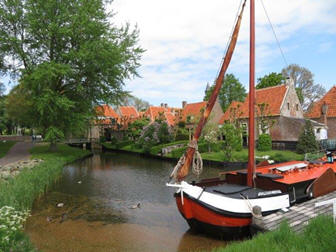
Lt/C Cliff McKibbin,
SN will present slides from his trip last summer
to Amsterdam, Netherlands. He will cover the
extensive canals of Amsterdam with over 3000
house boats; the House Boat Museum showing the
inside of a house boat as well as its cost to
buy and moor and its construction; a side trip
to the famous Keukenhof Gardens (think 10 million
tulips); and a side trip to Enkhuisen to the
Zuiderzee Museum . The latter was a water side
village similar to Sturbridge Village with people
explaining how to make rope, operate windmills,
plus all the activities necessary for a self-sustaining
village in the 1800s.
He will also
cover the engineering marvel of the walling
off the Zuiderzee, turning a third of Holland
from a dangerous shallow saltwater pond into
a freshwater lake. Finally, he will touch on
a few practicalities of a trip to Holland (getting
there, food is similar to ours, they speak English,
Airbnb, etc.). You’ll want to go and see
it for yourself!
Cliff is currently the
Treasurer and Historian of the Hartford Power
Squadron and has served as its Secretary and
Commander. He has also served the District 1
organization as Secretary, Treasurer, and is
currently the Editor of the Sounds of 1. He
and his wife, Lucille, have traveled to Europe
several times and always enjoy delving into
the different culture, art, and history.
January 28, 2020
Members' Meeting Featured
"The Connecticut
River from the Air"
by Jerry Roberts
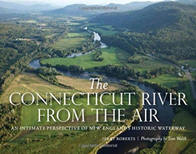
Author historian, Jerry Roberts has spent his career digging up the past, discovering history’s untold stories and bringing them to the public through books, documentaries and exhibits. He has served as executive director for several major museums in New York and New England. He likes to say that history is the best reality show ever produced.
The program is followed by Q&A and a chance to purchase the book and have it signed by the author.
October 22, 2020 Members’
Meeting Featured
“Emergencies at Sea”
by Captain Thomas Heinssen
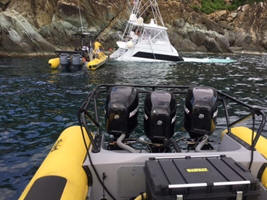
You’re out on
a beautiful Saturday afternoon, and you ground
your boat on a sandbar. You recheck your charts,
and there is no sandbar there. The annual spring
floods have created a sandbar where there once
was none, and you’re the lucky one that
found it! The tide is going out, so you are
soon to be high and dry. So, what do you do?
If you’re like a lot of boaters, you carry
towing insurance on your boat, so you call your
carrier Sea Tow. Different scenario. Now let’s
say you’re out on Long Island Sound and
you hit some rocks. You later check your charts,
and sure enough, there they are. No excuse this
time, but it happens. For now, though, you have
a situation on your hands. This time the tide
is coming in, and you’re taking on water.
Do you still call Sea Tow, or do you call the “Coasties?”
Is this still a towing situation, or did it
turn into a salvage operation? Does your Sea
Tow policy still cover you, or do you need to
rely your boat policy to cover you? Does your
boat policy even cover you?
Our October
speaker Captain Thomas Heinssen from Sea Tow
will talk to us about Emergencies at Sea and
will endeavor to answer these and any other
questions you have on this often-misunderstood
topic.
Please bring your questions and
join us for what is sure to be an educational
and entertaining evening.
September 24, 2019
Members’ Meeting Featured
“Steering
by the Stars: Celestial Navigation”
by Brian J. Koehler
Supervisor, Treworgy
Planetarium at Mystic Seaport

When we look up at the sky, we are seeing the very same stars that guided sailors long before the invention of navigational tools. Over time, we have advanced from compass to sextant to the modern GPS units that many of our smartphones have. It is important now more than ever to foster an interest in the traditions of the past. Our September presentation will provide a detailed overview of the evolution of maritime celestial navigation, beginning with the earliest recorded methods and advancing through the present time. We’ll explore deduced reckoning, eastingwesting, latitude by the noon sun during the day and Polaris by night, and the “Quest for Longitude” and its results. We will conclude by examining how these methods and tools have laid the groundwork for the modern GPS navigation upon which we all rely in our world today.
Since 1960, the Treworgy
Planetarium at Mystic Seaport has been a center
for science education, inspiring visitors to
draw connections between our maritime history
and the world around us. Supervising those efforts
since 2013 has been Brian Koehler. His primary
responsibilities have been to lead, manage,
train, and support the planetarium staff of
educators and volunteers. He oversees daily
operations, public shows, school programs, and
equipment maintenance. He is responsible for
developing new programming, as well as modifying
existing programming, to meet the newest Science
Education Standards at both federal and state
levels. Finally, he is spearheading new marketing
efforts to increase the
visibility of the
Planetarium, with the ultimate goal of maximizing
their attendance potential.
Please join us for our kickoff meeting of the fall season for what is sure to be an educational and entertaining evening.
May 28, 2020
Members’ Meeting Featured
“Ferry
Tales”
by Bill Fournier
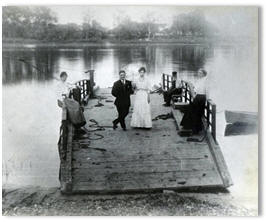
The May 28th Members’ Meeting will feature a talk by Bill Fournier. Bill will present us with the intriguing history of Connecticut River ferries from the earliest 'Fording Place' to their eventual replacement with bridges. Bill's research into the subject included viewing many items housed in local Historical Societies and Libraries, as well as his own extensive collection of Connecticut River historical items, books, Army Corps of Engineers charts and related reports. He is a wealth of knowledge and his presentation will be enlightening.
We will also be given a glimpse into the history of well-used ferry crossings located at Windsor, Hartford, Wethersfield, Haddam, and Old Saybrook.
Having grown up living next to the Connecticut River at the family homestead, Bill obtained his first rowboat at seven years old. He helped his parents maintain and operate Fournier's Boat Livery for the rental of Shad fishing boats. His interest in boating includes service in the CT DEEP Boating Division. Starting in 1983, he coordinated and taught various boating safety education classes throughout the State. Bill’s interests in history continued to grow while researching the history of King's (Terry's) Island. Currently, in preparation for publication, his research will be a reference for historians. The reference should also have a wide appeal to a general audience of those interested in River history. We are honored to have him as a speaker and look forward to his presentation.
February 26th 2019
Members' Meeting
"A Discussion on Connecticut's
Boating Industry"
by Don MacKenzie

The February 26th Members'
Meeting will feature a talk by Don MacKenzie,
Vice President and General Manager of Boats
Incorporated a boat dealership and marina located
in picturesque Niantic Connecticut. Boats Incorporated
is one of the few dealerships in Connecticut
to be Marine Certified‚ and a Top 100
Dealer since the inception of both programs.
It has been a Grady-White Admiral's Circle Member
for 15 consecutive years, a Yamaha Best in Class
Dealer in the Northeast for 11 consecutive years,
one of the Yamaha Dealer Council Members, and
last but not least, a Parker Marine Customer
Service Award Winner for the past three years.
Don's talk will mostly revolve around Hartford
and politics and how large our industry is and
how much revenue the industry brings into the
state. Hartford often treats our industry as
nothing but rich guys and think we all have
yachts and can afford to pay any taxes they
put upon us. They don't realize the average
size boat in our state is only 22'. Don plans
on discussing how much of an effect people in
the industry have in meeting one on one with
a representative from their district.
Don
will also discuss the job market. The boating
industry is losing good technicians by simple
attrition. The industry is screaming for good
mechanics and with Dealer Certification. The
good dealerships in the state are paying great
wages, medical, 401k with matching funds, personal
days, etc. It is a good paying job in a great
working atmosphere. The kids today don't understand
jobs are waiting for them. If you or someone
you know is looking for a career working with
boats, please do not miss this presentation.
The last thing he will discuss is the challenge
of bringing new and younger boaters into boating.
The list of boaters in their thirties is dwindling.
We must find a way to get the youth into boating.
The manufacturers have discovered they make
the most money on the larger boats and we need
an entry level boat that is affordable for the
younger generation to get their feet wet. Boating
is one of the ONLY activities that families
can still do together.
Please don't miss
what is sure to be a lively and informative
discussion on a topic we all love. Bring your
friends and family too.
January 22nd 2019
Members' Meeting Featured
"Light Houses
in Connecticut and Long Island"
by Susan
Tamulevich

New London's 1833 US Custom House was built at the height of the City's maritime power when New London was the second largest whaling port in the world. City leaders had petitioned the U.S. Treasury to build them 'a gem on the waterfront.' Architect Robert Mills, best-known for his design of the U.S. national Washington Monument, provided just that. The building was saved and now serves as the Custom House Maritime Museum.
Susan Tamulevich became executive director of the New London Maritime Society ten years ago. Since then, the society has adopted three local lighthouses and begun organizing their peers on Long Island Sound to form a cooperative lighthouse association. In her talk, Susan will speak about her work at New London Harbor 'Pequot' Lighthouse, Ledge Light, and Race Rock Light (off Fishers Island in New York) and about the joys and unanticipated complications of owning a lighthouse. Please join us for what is sure to be an informative and enjoyable presentation.
October Members'
Meeting Featured
Presenter
Cancelled Last Minute
September 2018 Members'
Meeting Featured
"The Ports of Martha's
Vineyard"
by Lt/C Cliff McKibbin, SN
informative talk to find out the pros and cons of each harbor and things to do in each town.
May 2018 Members’
Meeting Featured
“Sea Grant College Programs”
Nancy Balcom is the Associate Director and Extension Program Leader for Connecticut Sea Grant and a Senior Extension Educator with UConn Extension. Her extension interests range from seafood safety and marine spatial planning to seaweed aquaculture, disaster risk communication, and community resilience. She has been a member of the Sea Grant family for more than 33 years, starting in 1985 as a graduate student in Virginia, and has worked for Connecticut Sea Grant since 1990. Balcom has been a member of the Connecticut Seafood Council since its inception in 1997 and currently is in her 4th year as chair of the National Sea Grant Association Networks Advisory Council. She lives in eastern Connecticut with her husband, two sons and two enthusiastic Labrador Retrievers.
March 2018 Members’
Meeting Featured
“DEEP Fisheries Management
Program”
The Lobster Monitoring Program provides basic information needed to assess the long-term health of the Long Island Sound (LIS) lobster population. The Department’s goal is to ensure that the Sound’s lobster population is sustained while also providing opportunity for harvest by commercial and recreational fishermen.
The Long Island Sound Trawl Survey is a vital tool Marine Fisheries staff use to measure the abundance and distribution of finfish, squid and other macroinvertebrates (lobster, crabs, horseshoe crabs, whelks) in Long Island Sound, independent of commercial or recreational fishing.
Because this will also be our Annual Meeting, the Annual reports of the Commander, Executive Officer, Education Officer, Administration Officer, Secretary, and Treasurer will be presented. Acceptance of the proposed budget for 2018-19 will also be voted on. The report of the Nominations Committee will be given, and election of nominated officers will be held. Join us for what is sure to be an informative meeting.
February Members' Meeting Will Feature
"Philip
A. Gaudreau, Jr. Accredited Marine Surveyor"
A marine surveyor is a person who inspects boats, cargo, engines, barges, and pretty much anything that is on the water. Most marine surveyors specialize in one type of survey, yachts, and small crafts being the most popular type of surveyor. These are usually vessels used for pleasure or small craft used for commercial less than 1600 Gross tonnage, and it is the area of expertise for our speaker. Phillip's credentials cover over 40 years of experience in the marine industry and are too numerous to mention here. He has spent the last 30 years as the sole owner and employee of Allpoint Marine Services, specializing in marine surveying.
Some of the items that will be covered in his presentation are:
What is a Marine Surveyor?
Why get a Marine Survey?
Survey types: Prepurchase Survey, Condition and Valuation Survey, and Damage Appraisal.
How does a marine surveyor get the boat to tell its story (Systems on Board, Tools of the Trade)?
Please join us for a night that will give you an look into the world of the Marine Surveyor, a night that is sure to be enlightening and of great value to anyone contemplating buying or selling a boat.
January 2018 Members’ Meeting Featured
“A
Discussion on Search and Rescue”
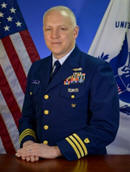
Since graduating from the Coast Guard Training Center, Cape May, NJ, in 1993, Commander Ely has amassed an impressive set of credentials. His honors include the Captain David H. Jarvis Award for Inspirational Leadership, the National Graduate School Distinguished Academic Student Award, the Coast Guard Meritorious Service Medal, four Coast Guard Commendation Medals, the Coast Guard Achievement Medal, and four Commandant’s Letter of Commendation Ribbons. He currently serves as the Response Department Head at Coast Guard Sector Long Island Sound in New Haven, CT where he is responsible for oversight of maritime search and rescue, maritime law enforcement, and incident management. Please plan to join us for an evening that is sure to interesting and informative.
October 2017 Members’ Meeting
Featured
“A
talk by George Gilbert on beautiful New Zealand”
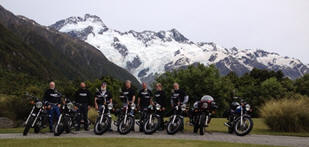
The October 24th
Members’
Meeting featured a talk on beautiful
New Zealand by Past District Commander George
Gilbert. Come listen to the adventures of George
and his brothers in New Zealand, the last habitable land
mass on earth to be populated. A place where
the natives are proud to be called
Kiwis
and 1/3 of the country is a protected national
park. Also, home to Auckland, one of the most
affordable cities in the world to live in, where
one in three households own a boat and where
there is a hill in Hawkes Bay named Taumatawhakatangihangakoauauotamateapokaiwhenuakitanatahu
which lays claim to the longest place name in
the world.
September 2017 Members’ Meeting
Featured
“The
Realities of New England Hurricanes”
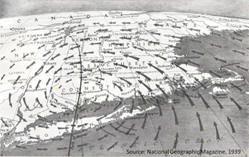 The
September 26th Members’ Meeting featured
a talk by NOAA representative Glenn Field on
New England hurricanes. New England hurricanes
are very different from the kind of hurricanes
that you’ve read about or that strike
Florida or the Caribbean. You will learn why
the structure is different and thus, how our
safety and preparedness rules are different
in some ways. People of my generation remember
Hurricane Gloria in 1985 and Hurricane Bob in
1991…and we think those were ‘real’
hurricanes. However, this sense of reality is
warped, since it has now been 62 years since
the last major hurricane (Carol) that struck
New England. This presentation will take you
back to the days of the 1938 Hurricane, Connie,
Diane, Carol, etc. and show what a true hurricane
really can do!
The
September 26th Members’ Meeting featured
a talk by NOAA representative Glenn Field on
New England hurricanes. New England hurricanes
are very different from the kind of hurricanes
that you’ve read about or that strike
Florida or the Caribbean. You will learn why
the structure is different and thus, how our
safety and preparedness rules are different
in some ways. People of my generation remember
Hurricane Gloria in 1985 and Hurricane Bob in
1991…and we think those were ‘real’
hurricanes. However, this sense of reality is
warped, since it has now been 62 years since
the last major hurricane (Carol) that struck
New England. This presentation will take you
back to the days of the 1938 Hurricane, Connie,
Diane, Carol, etc. and show what a true hurricane
really can do!
emergency managers, and
school groups and always listens to suggestions
for improvement of services. Also, he is responsible
for coordinating and implementing new procedures
at the NWS, for the quality assurance of products,
and is in charge of the SKYWARN volunteer weather
observers program. Also, Glenn works with towns
to enable them to become “StormReady,”
another National Weather Service community preparedness
program.
Prior to coming to Taunton, Glenn was a Lead Forecaster at the NWS in Raleigh, NC; a Forecaster at the NWS in Milwaukee, WI; and a Satellite Meteorologist at the National Environmental Satellite, Data, and Information Service’s Synoptic Analysis Branch in Washington, D.C. Glenn holds a M.S. Degree in Meteorology from the University of Wisconsin – Madison, where he also received his B.S. in both Meteorology and Economics (the 2 sciences that one can’t predict, he jokes.)
May 2017 Members' Meeting Featured
"Big
striped bass with light tackle"
 Captain
Mike is the founder and operator of Reel Cast
Charters, a full-time fishing charter based
out of Old Saybrook, Connecticut. His angling
pursuits have taken him across country, as well
as internationally, fishing in both fresh and
salt water from largemouth bass to giant bluefin
tuna. An innovative angler, he is constantly
applying new techniques, and his enthusiasm
and passion for the sport are contagious. Captain
Mike is a United States Coast Guard OUPV Licensed
Captain and graduate of Southern Connecticut
State University with a Bachelor's and Master's
Degree in Education. The seminar will feature
a power point presentation.
Captain
Mike is the founder and operator of Reel Cast
Charters, a full-time fishing charter based
out of Old Saybrook, Connecticut. His angling
pursuits have taken him across country, as well
as internationally, fishing in both fresh and
salt water from largemouth bass to giant bluefin
tuna. An innovative angler, he is constantly
applying new techniques, and his enthusiasm
and passion for the sport are contagious. Captain
Mike is a United States Coast Guard OUPV Licensed
Captain and graduate of Southern Connecticut
State University with a Bachelor's and Master's
Degree in Education. The seminar will feature
a power point presentation.
February 2017 Members'
Featured
"History in our Midst"
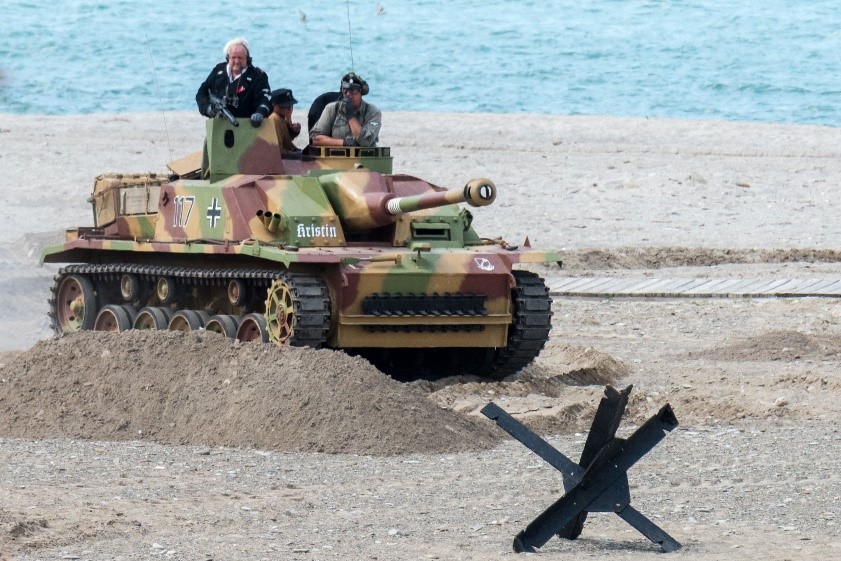
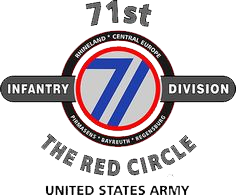 The
February 28th Members' Meeting featured Hartford
Power Squadron's own Don Watson, a Life Member
of the United States Power Squadrons with 35
Merit Marks and 69 years of service.
The
February 28th Members' Meeting featured Hartford
Power Squadron's own Don Watson, a Life Member
of the United States Power Squadrons with 35
Merit Marks and 69 years of service.Don's presentation will start with a brief history of the combat experiences of the United States Army's 71st Infantry Division. The 71st fought its way across France, Belgium, Germany and Austria ousting a crumbling German Army from these countries and liberating their citizens on its way. Don will recount some of the Division's experiences from its landing in Le Havre, France, to its eventual liberation of prisoners from the Gunskirchen Lager concentration camp in Austria.
Don will then share his experiences at the most recent reunion of the WW II 71st Division held in Erie, PA. This is a reunion of both division member's and survivors of the Gunskirchen death camp. These survivors and their families attend the reunion in gratitude each year because they understand that without Don and the 71st Division there would not have been any survivors. Don's presentation will also cover his side trip to the D-Day Conneaut, an annual recreation of the amphibious Allied landings upon the beaches of Normandy, France held on the grounds of Conneaut Township Park, Conneaut, Ohio in since 1999.
Also being presented will be pictures from a Reuters news photographer of war-ravaged areas at the time of the war and how these sites have since been rebuilt.
January 2017 Members'
Featured
"Scuba Diving – Then and
Now"
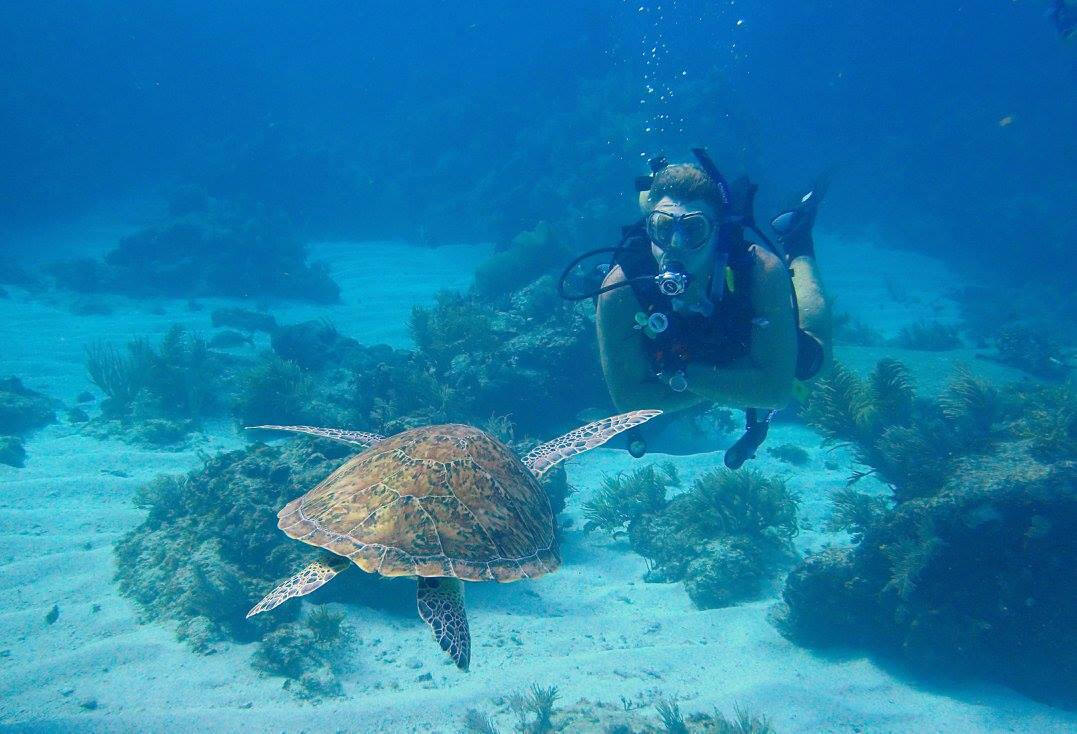 The
The January 24th Members’ Meeting featured
John Langlois of Enfield Scuba and Watersports.
John is a Professional Association of Diving
Instructors (PADI) Course Director with over
10,000 open water dives half of which were in
New England. The other 5,000 plus dives took
place on the East and West coasts of North America
and in the Caribbean, Central America, Europe,
the Red Sea, Micronesia, the Philippines, the
Sardine Run in South Africa, the Maldives in
the Indian Ocean and Australia. John has certified
over 2,800 PADI Open Water students and over
200 PADI Dive Masters and Instructors.
The
The January 24th Members’ Meeting featured
John Langlois of Enfield Scuba and Watersports.
John is a Professional Association of Diving
Instructors (PADI) Course Director with over
10,000 open water dives half of which were in
New England. The other 5,000 plus dives took
place on the East and West coasts of North America
and in the Caribbean, Central America, Europe,
the Red Sea, Micronesia, the Philippines, the
Sardine Run in South Africa, the Maldives in
the Indian Ocean and Australia. John has certified
over 2,800 PADI Open Water students and over
200 PADI Dive Masters and Instructors. The presentation will feature an evolution of diving from the earliest “twin-hose” open circuit design equipment familiar to Sea Hunt fans, to the modern most commonly used single-hose twin-stage design and Buoyancy Control Devices commonly referred to as BCDs.
Also featured will be pictures from various dive trips and diving mementos such as teeth from megalodon sharks. These behemoths could grow to almost 60 feet and have been extinct for over 2.6 million years.
There will be a raffle for free tuition to an Open Water Scuba Course to be taken at Enfield Scuba and Watersports. The raffle is free and open to all those who attend. One lucky winner will go home with free tuition valued at $250.
If you, your children, or anyone else you know has an interest in scuba diving, this is a meeting you won’t want to miss. As always, friends and family are welcome to attend. Seating is limited so if you don’t want to be left out in the cold (literally), contact Jim Salvatore to make your reservations.
October 2016 Members'
Meeting Featured
"2015 Bermuda 1-2 Sail Race"

 The
October 25th Members' Meeting featured Dan Stadtlander,
first place winner in Class 4 in the single-handed
first leg of the 2015 Bermuda 1-2 sail race.
The
October 25th Members' Meeting featured Dan Stadtlander,
first place winner in Class 4 in the single-handed
first leg of the 2015 Bermuda 1-2 sail race.The Bermuda 1-2 is one of the oldest short-handed offshore races in the world. The race is not for the faint of heart, it is a grueling 635-mile single-handed leg from Newport, RI, to St. Georges, Bermuda, and a double-handed leg back.
Dan competed in the race in 2007, 2009 and 2013. In 2007, he finished in 2nd place in Class 4 in the combined elapsed time in the race and third place in the combined corrected time. In 2009, Dan finished in 4th place in Class 4 in the single-handed first leg of the race. In 2013, Dan was forced to drop out during the first leg because of extremely adverse conditions that resulted in a shredded genoa and several mechanical failures, including a broken boom. Dan will be sharing his lessons learned from both failures and triumphs in these races.
Also presented will be an examination off what is required to undertake this race, including preparation, qualifying, safety equipment, keeping the boat going with minimal sleep, dealing with the Gulfstream and other aspects of the voyage.
September 2016 Members'
Meeting Featured
"The Water World of Venice"
The September 27th Members' Meeting featured a talk
and slides on Venice, Italy by Lt/C Cliff McKibbin,
SN. He will briefly review the history of Venice
including the era in which it was the primary sea-faring
power of the Mediterranean Sea and controlled trade
with the far east. He will then describe modern
day Venice including getting there, its transportation
infrastructure, and sights and activities. Finally,
he will touch on the future questions related to
rising water.
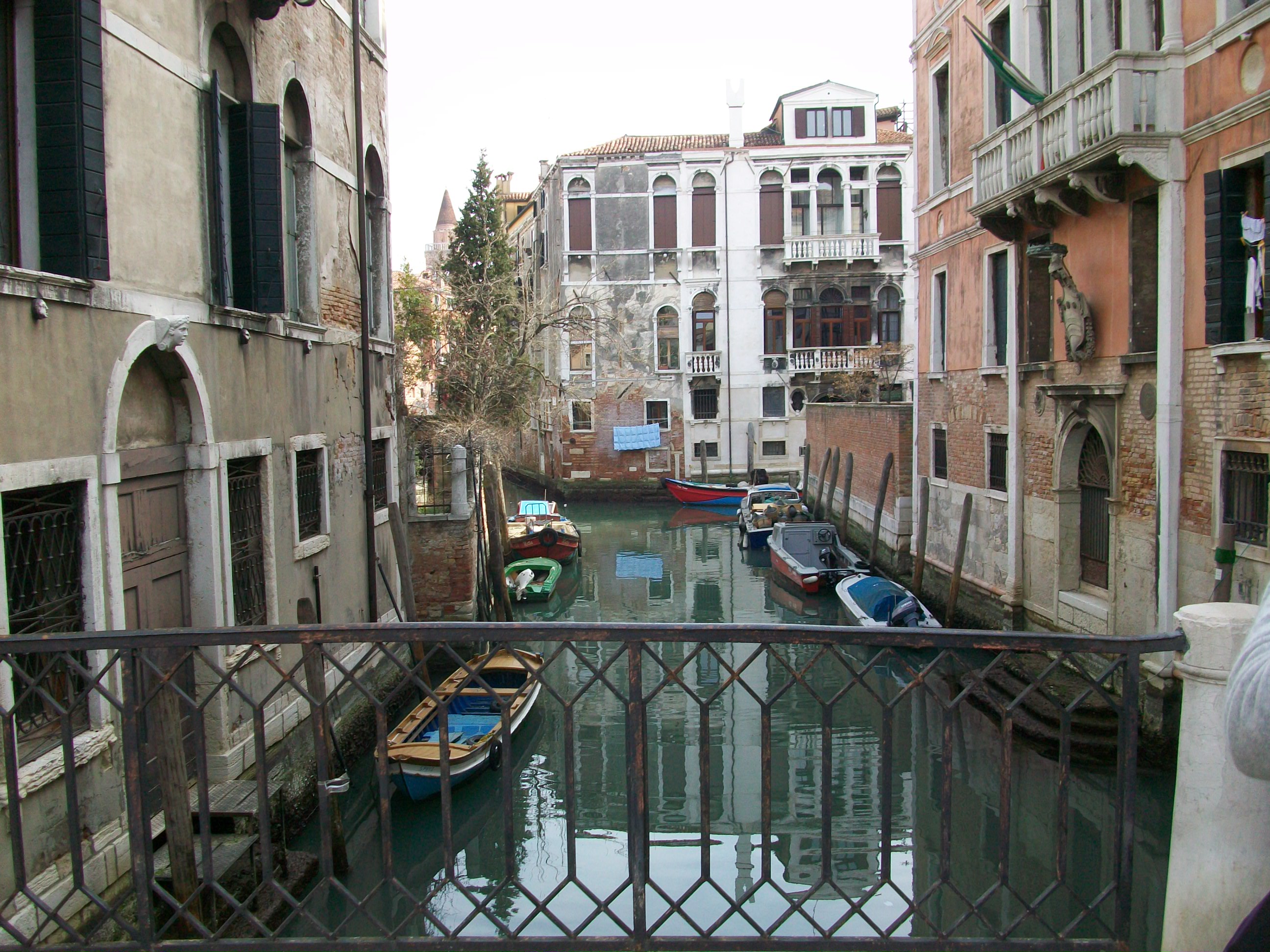
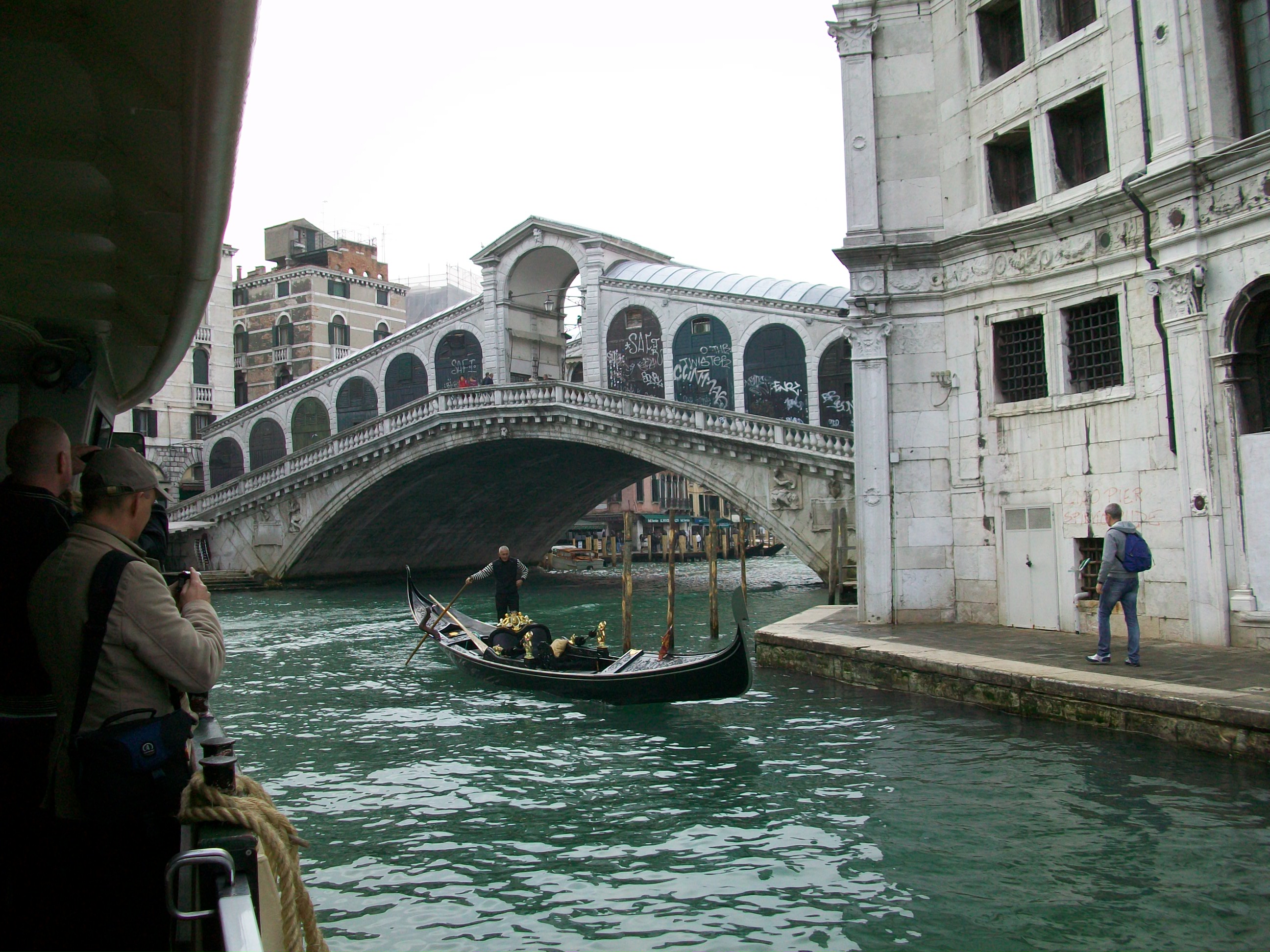
|
